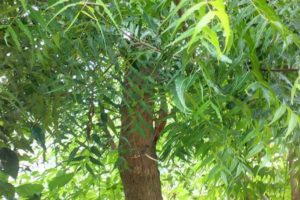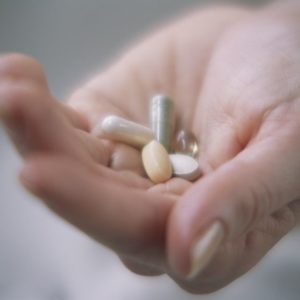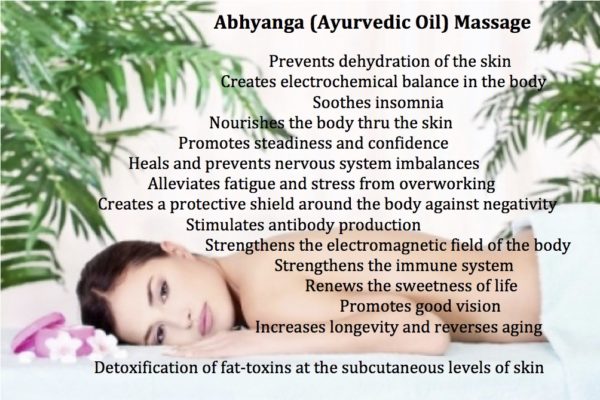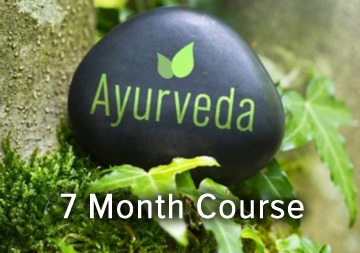Ayurveda Health Counselor (AHC) Online Program
A Self-Paced Online Learning Experience…
Testimonial:
“I can’t say thank you enough for your school. I’ve been a high school teacher for many years. Consequently, I recognize and value a coherent and cohesive curriculum when I see it. The way you interfaced the massage and energy medicine modalities with the theories and concepts of Ayurveda was exactly what I was looking for when I found your school. Thanks to you and your school, my holistic center is precisely what the local community needed. My practice is booking out 3-months in advance with the most amazing clients whose lives have been transformed by Ayurveda. I still teach school, but my part-time holistic practice is what sets my soul on fire. Thank you for bringing Ayurveda to the world in this capacity and for being a shining light in my life.” -Vanessa Mumford, LMT
Below are some Ayurvedic articles written by Karyn for your enjoyment:
Ayurvedic Migraine Headache Advice
By Karyn Chabot, M.Ay, LMT, RYT
-Sacred Stone Online School has been an esteemed Ayurveda School since 2001 where students successfully study Ayurvedic Medicine to heal, body and spirit.-
According to the science of Ayurveda all of creation is made up of five elements: earth, water, fire, air and ether. Each individual is born with a unique combination of these elements that form the Vata, Pitta and Kapha doshas determined at the moment of conception. This unique constitution or genetically determined blueprint (prakruti or “first creation” in Sanskrit) reveals innate tendencies, gifts, challenges, lessons, functional habits and hidden potential and determines how one experiences life. This also includes the specific foods that will be more healing or more harmful overall.
According to Ayurveda medicine, taste has a specific and powerful effect on the body. Our physiologies are healthier when they have a balanced experience of tastes each day. Americans tend to overeat sweet and salty foods, which is why our population is so obese. Taste directly affects our nervous system and sets our vital fluids in motion, stimulating gastric fire and the power of digestion. It’s better to taste rather than avoid even a bitter herb, because the taste will signal the brain to secret specific digestive enzymes into the digestive track just right for that food. With medicines and supplements, the taste of the medicine is thought to contribute to its therapeutic effect, improving the absorption of the medicine. Therefore, tasting and chewing your vitamins or herbal pills a little first can increase their efficacy.
Specific foods are not good or bad for everyone; an individual’s blueprint or constitution must be considered to make optimal food choices. It doesn’t matter what we eat. It matters what we can digest because everyone digests at different rates and degrees with unique sensitivities. This can be determined by self-exploration and observation, including trial and error. Begin by eliminating certain foods to see what changes happen in the body or adding certain foods to notice the effects. This practice will develop your intuition as well. You might also want to seek out the professional services of an Ayurvedic counselor who is trained to read the pulse, observe the tongue, eyes, body, mannerism, speech, hair, nails, astrology chart (Jyotish) and so on.
Let’s use an example of someone who has been struggling with migraine headaches. According Vedic medical literature, people who are constantly overthinking, compulsive, Type-A personalities, overachievers, perfectionists and people who are hyper focused on striving for fame and fortune are most prone to migraines, especially women. The pain usually begins in the aura of the eye, then spreads. Some people report flashes of light in the periphery of the eyes at the onset of a migraine, almost as a warning to chill out and rest. If pain and light sensitivity are present, it will become worse if the eyes are not still. This is why it feels so good to turn the lights off and close your eyes at the onset of a headache.
Some triggers of migraine headache include sour foods, such as pickles; citrus fruits, including tomatoes; soft drinks, coffee and chocolate, insomnia, disturbed emotions, food allergies, genetic predisposition, karma.
Remedial Tips for Acute Migraines
- Avoid allergic foods such as wheat, gluten, dairy, corn, GMOs or others
- Avoid spicy, sour tastes
- Use the sweet and salty taste sparingly
- Add the bitter taste in moderation, such as arugula
- Increase magnesium with supplements or foods such as oats, barley, pumpkin seeds, green leafy veggies
- Avoid artificial sweeteners, MSG, smoking and alcohol
- Meditate, rest, read and relax for 20-30 minutes between 10am-2pm and again around 6pm
- Get enough deep, restorative sleep
- Exercise briskly (walking, biking, yoga) between 6am-10am
- Use sacred nasya oil (drops in the nostrils) twice daily
- Rub coconut oil on the feet and top of the head before sleep
- Receive sacred shirodhara therapy (oil flowing over forehead)
Neem Oil to the Rescue
By Karyn Chabot, M.Ay., LMT, RYT
-Sacred Stone Online School has been an esteemed Ayurveda School since 2001 where students successfully study Ayurvedic Medicine to heal, body and spirit.-
While sitting in class at The Ayurvedic Institute, I remember Dr. Lad telling his class, “No bugs live in neem!” I imagine that’s because it’s has a horrible odor, but if you add a citrus essential oil like grapefruit or ylang ylang, the odor can be masked. Tulsi oil also smells nice when added to neem oil. Neem is the best pesticide, as well as one the most healing oils to apply to our skin. With its long leafy branches and lotus-like flowers, the neem tree has long enjoyed a prominent place in the Ayurvedic tradition. It is green-colored oil with a smoky, earthy scent. Centuries ago, Sanskrit writings made mention of its medicinal applications, and healers in India continue to call neem the “village pharmacy’ in acknowledgement of its versatile range of uses. Today, the benefits harbored in the leaves, fruits, oil and bark of the plant are gaining recognition in the United States, and we now find this ingredient in everything from toothpaste to shampoo.
Why is neem so special? According to the science of Ayurveda, the neem tree possesses powerful cooling energies that act as an anti-inflammatory and anti-septic in cases of excess heat. “Neem can be used to treat imbalances involving the fire element within the body. It’s therefore most often applied in cases of excess pitta (inflammation). By putting out the excess heat of pitta, the fire element, neem prevents problems down the road.
Skin eruptions, roscea, dermatitis, psoriasis, eczema and acne are a classic pitta problem, and in India, neem has come to the rescue against topical fungi, viruses, and other infections. “Conditions like eczema and hives always involve a heat and toxic ama (bodily waste) component. Neem can counter more serious skin conditions as well, says Ellen Norten, author “Neem: India’s Miraculous Healing Plant” (Healing Arts Press, 2000). “Because neem contains antibacterial properties, it is effective in treating epidermal conditions such as septic sores, infected burns, scrofula, and ringworm. Stubborn warts even clear up with neem.”, she adds.
A powerful blood cleanser, neem is often used in Ayurvedic detoxification programs. Neem also acts as a powerful anti-oxidant on the skin. David Frawley, author of “Yoga and Ayurveda” (Lotus Press, 1999) explains that neem serves to clean the blood and liver at profound levels, even to the point of ridding the body of heavy metals and should be used with discretion. “Neem would be useful for anyone about to embark on a yogic spiritual path, as it counters the ill effects of old diets and toxins. Before committing to a program of internal cleansing, consult an Ayurvedic physician.”
Should We Taste Our Vitamins?
By Karyn Chabot, M.Ay., LMT, RYT
-Sacred Stone Online School has been an esteemed Ayurveda School since 2001 where students successfully study Ayurvedic Medicine to heal, body and spirit.-
According to the ancient medical system of Ayurveda all of creation is made up of earth, water, fire, air and ether. We are each born with a unique combination of these elements defined by the Sanskrit terms Vata, Pitta and Kapha doshas. At the moment of conception, this unique constitution or genetically determined blueprint (prakruti or “first creation” in Sanskrit) reveals one’s inherent patterns, tendencies, gifts, skills, obstacles, lessons, functional habits and unseen potential and determines how one experiences life. This also includes specific foods, supplements, tastes, seasons and activities that will be more cathartic and beneficial overall.
According to Ayurveda, taste has a specific and powerful effect on the body. Our physiologies are healthier when they have a balanced experience of tastes each day. Americans tend to overeat sweet and salty foods, which is why our population is so obese. Taste directly affects our nervous system and emotional body. Its action is transported by prana (life force located inside the oral cavity), and received by the prana located in our brains. Taste sets our vital fluids in motion, stimulating gastric fire, while aligning specific enzymes in the stomach to receive the nutrient
The mouth is the first organ of digestion. Vitamins, herbs and supplements will still be effective if they are just swallowed, but some of the therapeutic value will be lost because the action of taste wasn’t activated. If the taste of your vitamin is nauseating, it’s not worth tasting it. Just bless it and swallow it with the power of thought that it will be effective. According to Ayurvedic medicine, a large percentage of a herb or supplement’s effect is bio-chemical, and that the other half is comprised of several factors, of which taste is one. Swallowing dead vitamins or herbal pills without tasting them reduces their efficacy, but if you taste and chew them a little first, you increase their efficacy substantially.
Specific foods are not good or bad for everyone overall; an individual’s blueprint or constitution must be considered to make healthy food choices. It doesn’t matter what we eat. It matters what we can digest because everyone digests at different rates and degrees with unique sensitivities. This can be determined by self-exploration and observation, including trial and error. Begin by eliminating certain foods to see what changes happen in the body or adding certain foods to notice the effects. This practice will develop your intuition as well, which should be your primary barometer anyway. You might also want to seek out the professional services of an Ayurvedic counselor who is trained to read the pulse, observe the tongue, eyes, body, mannerism, speech, hair, nails, astrology chart (Jyotish) and so on.
Even Dr. Jensen is aligned with the Ayurvedic concepts I have explained in this article because he believes the direct cause of acid build-up in the physiology begins with eating quickly, not chewing properly and not focusing on food we are eating. Here are some culprits: Eating while reading, driving, working, improper chewing, overloading, and the wrong kinds of foods. Food that is not properly masticated is retained longer in the stomach. As a result, it turns sour and creates excessive gas. This causes a great deal of irritation and inflammation in the mucous lining of the digestive system.
The Golden Rule of Health: Eat slowly, chew food well, and don’t overload. Eat only plain food, plenty of fresh vegetable matter, salads, ripe fruits. The richer foods, however, such as meat, eggs, starches, sweets, etc., should be taken more moderately and only in proportion to the amount of work one does.
The food should be eaten as dry as possible, mixing thoroughly with saliva to a liquid form, not drinking liquids with the meals. The drier the food is eaten, the sooner the acid condition can be overcome. Chew! Chew! Chew, so that your food is liquefied before swallowing.
For optimum health, we should all be experiencing each of the five tastes every day in our meals: sweet, salty, sour, pungent and bitter. These tastes directly affect our physiology. For example, eating too many sour foods can cause excessive oiliness in the body. Too much sweet taste will increase adipose tissue and cause swelling, though in some cases it can cool internal inflammations when tasted in moderation. If you have trouble getting all five tastes each day, there is a supplement called triphala that has all five tastes within it. I must say that it tastes horrific, but it is an amazingly powerful herbal tonic for the blood, brain and bowel and it pacifies all three doshas. The only contraindication is that it should not be taken during bouts of diarrhea, pregnancy or menstruation. Otherwise, Dr. Lad claims that taking triphala tea each day will help you smell like a flower.
Glowing with Ojas
By Karyn Chabot, M.Ay., LMT, RYT
-Sacred Stone Online School has been an esteemed Ayurveda School since 2001 where students successfully study Ayurvedic Medicine to heal, body and spirit.-
Ojas is moonlike in properties, unctuous in color and cold in potency, stable moving forth, clear, soft, slimy and is chief among the seats of life: the entire body with all its organs are pervaded by it, and in its absence the body of living beings perishes.[1]
Processed ojas lives in the heart in a quantity of about 8 drops and if it is destroyed, the person will die. It is considered the essence of all bodily tissues (dhatus). Modern medicine as not found the exact equivalent of ojas, however it is similar to a combination of biological substances such as albumin, globulin and various anti-bodies such as white blood cells and lymphocytes: all of which are found throughout the various dhatus to maintain vitality and natural resistance against illness. This is called natural immunity or glowing with ojas. Unprocessed ojas circulates through out the body and becomes processed in the heart. [2]
Some foods that will build and preserve ojas: (These foods will also build kapha, so eat them in moderation.)
1. Raw peeled almonds
2. Raw unprocessed milk
3. Ghee
4. Saffron
5. Raw honey
6. Mejool dates
7. Shatarvri (herb)
8. Ashwaganda (herb)
Activities that build and preserve ojas:
Blissful singing (kirtan)
Walking in the forest, nature or along the shore
Meditation
Prayer
Being in love
Being pregnant (after 2 pregnancies, ojas can be depleted)
Thinking joyful thoughts
Warm oil massage
Activities that burn or deplete ojas:
Too much computer work
Too much exercise or profuse sweating
Excessive worry
Insomnia
Negative thinking
Workaholism
Alcoholism
Excessive sex (especially masturbation)
Stress
Fatigue
Loneliness
Heartbreak
Over-thinking
Excessive reading
[1] Sushruta Samhita, Sutrasthana, ch 15
[2] Maharishi University
Ayurvedic Oil Massage Benefits
By Karyn Chabot, M.Ay., LMT, RYT
-Sacred Stone Online School has been an esteemed Ayurveda School since 2001 where students successfully study Ayurvedic Medicine to heal, body and spirit.-
Studies show that receiving a professional therapeutic massage about once per month can dramatically lower stress levels and rejuvenate the body. Stress and unresolved emotions accumulate in our tissues and can be processed and removed with Ayurvedic massage techniques. Stress, being the root cause of most disease, can be managed with meditation, yoga, exercise, laughter, breath techniques, prayer, music, mantra, Ayurvedic massage, dance, being in nature, nutrition for your Ayurvedic body type and balancing work, play, family, school and relationships. Balance is the key word. The Sanskrit word for balance is sama and is also the acronym of: Seaside Academy of Massage & Ayurveda (SAMA) in Newport. At SAMA, one can learn Ayurveda, massage and yoga all under one roof and graduate with a diploma. Of course, general, basic massage is also very cathartic, but Ayurvedic oil massage, also known as abhyanga, transcends most forms of bodywork when it comes to reversing the aging process and rejuvenation.
What is Ayurveda? It is India’s ancient medical system that holistically treats the body, mind and spirit. It was founded on the concept that the human body, given the right support, has an inherent capacity to heal itself. Considered one of the top three medical systems in the world listed by the World Health Organization, Ayurveda touts that all of creation is made up of five elements: earth, water, fire, air and ether. Each individual is born with a unique combination of these elements that is determined at the moment of conception.
This ancient science knew that oil was lipophilic, meaning that when it is applied to the skin in a specific sequence and with just the right pressure and amount, it can help dissolve fat and toxins in the subcutaneous layers of the skin. Ayurvedic oil massage also signals the brain that “all is well” and unconsciously brings us back to the warm, safe, loving feeling we experienced floating in the amniotic fluid of the womb. On the other hand, the use of creams, lotion, and refined oils that have ingredients you can’t pronounce can potentially suppress the body’s metabolism, clog the lymphatic system and poison the physiology. Use nourishing topical oils to expel toxins, strengthen the immune system and provide deep healing and rejuvenation. According to the medical science of Ayurveda, one should apply oil to the skin every morning before a shower or bath. In the evening, apply it to the crown of your head, ears and soles of your feet for the most restful sleep. Ayurveda states that you should not apply anything to your skin that you would not eat, so choose your oils carefully.
Creams and lotions ultimately dehydrate the skin because of the surfactants/emulsifiers that are used to keep the ingredients (oil and water) from separating. There are very few creams and lotions that are edible, but as the public become more educated, more edible creams and lotions will be made without surfactants. Surfactants are similar to detergent. They feel great when they are applied to the skin, but then, when you shower or bath, the water suds up the surfactants still sitting on the surface of the skin and inevitably washes away any of your skins own natural oils. Carcinogenic, toxic pollutants are as damaging when applied externally as they are when ingested.
This may not be apparent immediately, but there is no question that many of the fancy products that people are applying to their skin today is indirectly linked to our society’s manifestation of a low immune system, among other things. The immune function is weakened by constantly fighting ama (toxins). On the other hand, using nourishing oils expel ama and strengthen the immune system. Ayurveda states that you should not apply anything to your skin that you would not put in your mouth, i.e., food.
The skin views oil as food for the cells. According to ayurveda, the overall best product to use for the majority of the population is sesame oil. Each body type should use the oil that is specific for their condition. But, sesame is the best all around oil for head or foot massage, in which it is often recommended regardless of the natal body type.
Warm oil massage has its root in the ancient science of self-healing from India. The Sanskrit word for oil massage is abhyanga. Below are the benefits of abhyanga:
- Oil rubbed into the skin prevents dehydration; strengthens the nerves
- Creates an electrochemical balance in the body
- Soothes insomnia
- Nourishes the body, promotes steadiness and confidence
- Promotes good vision
- Heals and prevents nervous system imbalances
- Alleviates fatigue and stress from overworking
- Increases longevity and reverses aging
- Strengthens the electromagnetic field of the body
- Creates a protective shield around the body against negativity
- Increases the immune system
- Stimulates antibody production

~Sacred Stone Online School has been an esteemed Ayurveda School since 2001 where students successfully study Ayurvedic Medicine to heal, body and spirit.-
